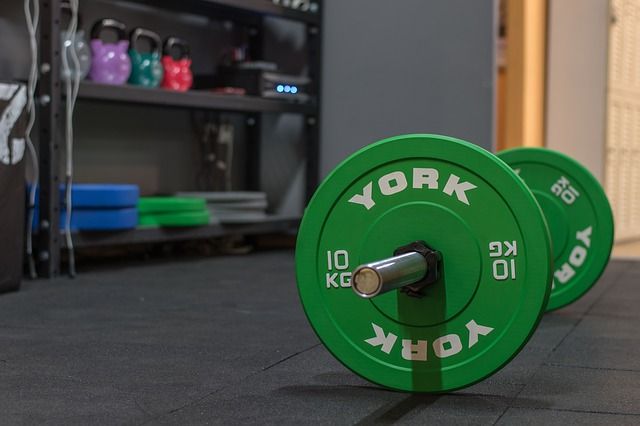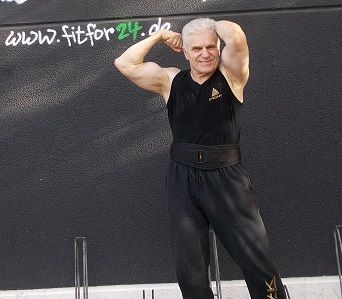So we have put the issue of nutrition behind us in old age and are now dealing with sport.
Sport is quite relative . Fishing, darts, golf and other sports are certainly justified, but in this context only endurance training and strength training .
The best time for sport
There are no standardized statements about this!
The greatest cardiovascular efficiency and muscle strength is accessed around 5 p.m., but the body temperature also seems to be the most favorable in terms of enzyme activity here. If you look at a daily glucose curve that is not influenced by food, it also becomes clear that insulin sensitivity must be very strong around 5 p.m., since muscle cells are already particularly receptive to nutrients here even without training (fat cells too, of course).
But there are also studies that favor morning training. Current studies confirm that morning training provides the best quality of sleep. Adaptation of the organism and metabolism also enable us to transfer all the advantages of evening training to the morning, provided that we train regularly in the morning.
The best training time will probably be the one when you is relieved of everyday obligations and where you feel most comfortable.
The check-up at the doctor
A check-up at the doctor?
Yes, you should first have a medical check-up to determine whether you are fit for sport at all. Not everyone has a sporting past, not everyone is top fit according to their age. For example, certain heart diseases could even be fatal if they were physically active.
Whether people with heart disease are allowed to exercise at all is controversial, and cardiologists and internists usually gave a negative answer, especially because of the so-called press breathing during exertion. It looks different with endurance training after a medical sports medical examination. High blood pressure and circulatory problems can also be dangerous, which is why a medical check-up is a must in such cases.

No experiments without the supervision of an experienced doctor.
Endurance and strength training have proven themselves as rehabilitation training after strokes, heart attacks or accidental injuries. Bad posture and back problems can be avoided and corrected under supervision with targeted muscle training. In addition to pure muscle strengthening, individually tailored training should always include a stretching and extension program.
With strength and endurance training, many diseases and ailments of old age can be delayed.
The sporty entry
In order to benefit from sporting activity, you don’t even have to be set high goals. Anyone can build a healthier and more muscular body with a better functioning metabolism with basic bodybuilding exercises, regardless of whether they have good genes or not.
In general, membership in the gym or sports club is recommended, where you can present your training goals to a qualified trainer. Whether fitness and general health are in the foreground, or whether you want to build up as much muscle mass as possible, the more a trainer experiences, the more individual the training becomes.
Endurance sport
Good fitness studios also allow endurance training on various machines such as treadmills, exercise bikes, cross trainers and rowing machines in any weather. Those who prefer to do endurance sports in the great outdoors can do the same exercises plus swimming in the fresh air.
Running
Both running and brisk walking are ideal endurance sports. Those who are very overweight should rather go cycling or swimming. Caution is also advised for people with hyperthyroidism, severe liver and kidney damage, cardiac arrhythmias and heart defects.
At first you should hold back and not walk too fast and for too long, on a hard surface such as asphalt or Concrete is to be avoided and a soft floor covering such as forest and meadow paths are preferable. Choosing the right shoes is very important when running . The shoe has to support the movements, the wrong shoes can irritate the Achilles tendon, especially if the running technique has not yet developed properly. You only develop good running technique over time, which is why it is better to hold back a little at the beginning.
The cycling
That Like running training, cycling trains the heart, circulation and leg muscles. Those who do cycling as endurance training and not as conditioning training have to train longer than when running. The duration of the training should not be less than 45 minutes and the route should not be too demanding.
Swimming
Swimming is a very good activity for the entire musculature without overwhelming the joints. Breaststroke swimming is best as a cardiovascular exercise. Back crawling is the healthiest swimming style. It is advisable to change the swimming style several times to prevent tension.
The strength training
The beginner
A beginner will make great progress in little time. Since the muscular strain on the body is unfamiliar, relatively small training stimuli are sufficient to stimulate muscles to grow, to ensure a faster metabolism and also to develop a stronger body. An exercise for one muscle group is completely sufficient at the beginning and over a longer period of 2 to 3 times a week up to about 6 or 8 weeks, then the training plan should be revised and replaced. 8 to 12 repetitions per round and with a training unit of about 60 minutes.

Before the actual training , a should be easy Warm up for about 5 minutes on the bicycle ergometer, treadmill or cross trainer. Depending on what suits you best. After that, stretching is the order of the day, because flexibility is not only important in everyday life, but also in strength training. A distinction is made between static and dynamic stretching. “Dynamic stretching before and after training” applies not only to beginners, but also to advanced users (whereby the end position is not held, but is done by gently “bouncing”).
By the way, it is a Myth that stretching helps prevent injuries and sore muscles.
As a training plan for beginners, a full body workout is usually recommended.
On non-training days, not only the abdominal muscles but also mobility can be trained.
So-called split training is usually recommended as a training plan for slightly advanced users which could look like this, for example.
So that the training ( the exercise, the weight, the repetitions) do not become accustomed, the muscle must be given new training stimuli and training systems are therefore changed and intensity techniques are used. There is no fixed period of time for a change, but you should give your body and muscles the time it needs to grow.
Training systems cannot be applied directly to people aged 40 and over recommend that the starting positions are too different. However, an increase in the selection and the number of exercises, changes in execution (intensity techniques), as well as a different training composition cause new training stimuli.
Closing words
Too much strength training but also too much endurance sport produces tons of cortisol.
As a reminder , cortisol is a stress hormone, a substance that inhibits growth. Moderate amounts of it are desirable, as it promotes fat loss and has an anti-inflammatory effect. It also promotes the formation of sugar from protein, so that our body receives quickly available energy again. But any kind of stress also stimulates the release of additional unwanted larger amounts of cortisol.
Whether stress in everyday life or through intensive training, both trigger an additional release of cortisol. In order to prevent catabolic effects, it is essential to avoid overloading. If the cortisol level in our body is higher than that of growth hormone and testosterone, muscle mass is always reduced and the body composition shifts in favor of fat stores. Practically exactly the opposite of what we want to achieve takes place.
The practice of effective endurance training or strength training is always a very fine line when it comes to success.
Therefore, the emphasis on training in old age must be related to braking the aging process, Always be a moderate training.

